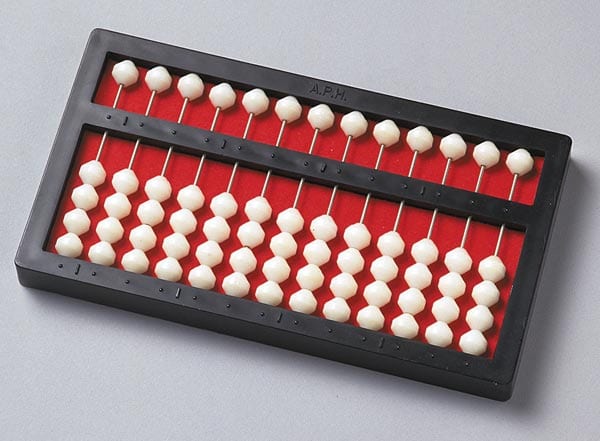What is an Abacus – Definition – Explanation – Use and Types
Abacus – Explain an abacus to a child
An abacus is a traditional counting tool used for arithmetic calculations. It consists of a frame with rods or wires, each containing beads that can slide back and forth. The abacus is often considered one of the earliest counting devices, and it’s still used in various cultures today for mathematical education and calculations
What is an Abacus
An abacus is a manual calculating tool that has been used for centuries to perform arithmetic operations such as addition, subtraction, multiplication, and division. It consists of a frame with rods or wires, each holding beads or counters that can be moved back and forth to represent numbers.

Definition
The abacus is defined as a device for counting and performing calculations, typically made up of a rectangular frame holding several rods on which beads are strung. Each rod represents a different place value (units, tens, hundreds, etc.), allowing users to perform mathematical operations efficiently.
Structure and Components
- Frame: The outer structure that holds the rods and beads.
- Rods or Wires: Vertical rods that hold the beads; each rod corresponds to a different digit in a number.
- Beads: Usually made of wood or plastic, these represent numbers. The number of beads and their arrangement can vary between different types of abacuses.
- Dividers: Some abacuses have a horizontal bar that separates the beads into different value groups.
Types of Abacuses
- Chinese Abacus (Suanpan): Typically has two beads in the upper section and five in the lower section for each rod. It is widely used in China and can represent decimals.
- Japanese Abacus (Soroban): Usually has one bead in the upper section and four in the lower section. The design is optimized for arithmetic calculations.
- Russian Abacus (Schoty): Features a different configuration and bead arrangement, often used in Russia and Eastern Europe.
How to Use an Abacus
- Basic Addition:
- To add numbers, move the beads towards the divider.
- For example, to add 3 + 2, move three lower beads to the right and then move two more lower beads to the right, resulting in five.
- Subtraction:
- To subtract, move the beads back towards the left.
- For example, to subtract 2 from 5, move two beads from the right back to the left.
- Multiplication and Division:
- More complex operations can be performed through repeated addition or subtraction, along with regrouping.
Example Calculations
- Addition:
- To calculate 7 + 5 on a Chinese abacus, you would first set 7 by moving 7 lower beads, then move 5 more, resulting in 12.
- Subtraction:
- To calculate 10 – 4, start with 10 (by moving 10 beads) and then move 4 beads back, resulting in 6.
Uses of an Abacus
- Arithmetic Calculations:
- Addition and Subtraction: Beads are moved to represent the numbers being added or subtracted. For instance, to add 5 + 3, you would move three beads to the right.
- Multiplication and Division: More complex operations can be performed by using combinations of addition and subtraction, alongside grouping beads to represent larger numbers.
- Educational Tool:
- Teaching Basic Math: An abacus is often used in early childhood education to teach basic arithmetic, helping students visualize numbers and their relationships.
- Developing Mental Math Skills: Regular use of an abacus can enhance mental calculation abilities, as users learn to visualize and manipulate numbers in their minds.
- Cultural Significance:
- The abacus has historical and cultural importance in many societies, symbolizing traditional methods of calculation before the advent of calculators and computers.
- Professional Use:
- In some regions, particularly in Asia, the abacus is still used in business and trade for quick calculations, demonstrating its effectiveness in financial transactions.
Advantages of Using an Abacus
- Visual Learning: Provides a tactile and visual way to understand numbers, enhancing comprehension.
- Speed and Accuracy: Skilled users can perform calculations rapidly, often faster than with a calculator for simple operations.
- No Power Required: An abacus doesn’t require batteries or electricity, making it a reliable tool in any environment.
Conclusion
The abacus is a powerful educational tool that helps with understanding the concepts of numbers and arithmetic. It’s not only a practical device for calculations but also enhances mental math skills when used consistently.
The abacus is a versatile and enduring tool for calculations that has adapted over centuries. Whether used in educational settings or professional environments, it remains an effective way to perform arithmetic operations and develop numerical skills. Its simplicity and effectiveness continue to be valued around the world.